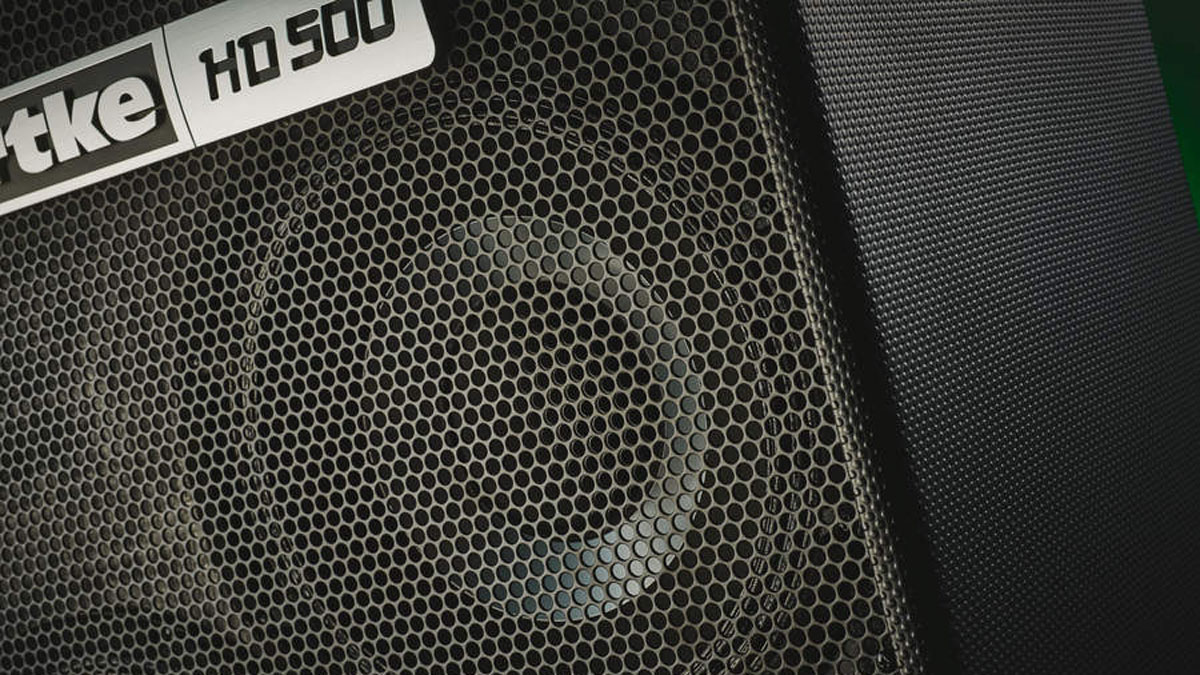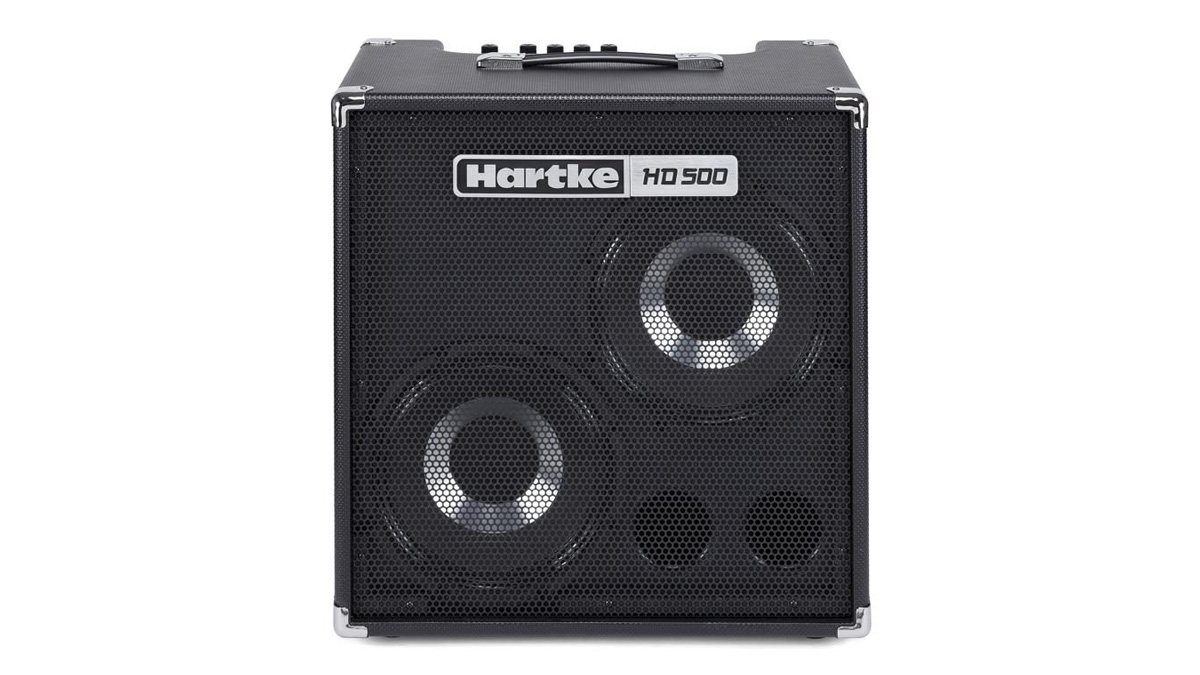MusicRadar Verdict
Pound for pound, one of the best combos we’ve had this year.
Pros
- +
Clear, crisp bass.
- +
Compact and powerful.
- +
Great price.
Cons
- -
No extension cab output or separate Aux-In volume.
MusicRadar's got your back
Hartke has been making quality bass gear for longer than you might imagine.
American Larry Hartke developed his unique aluminium cone drivers through the late 70s, although we Brits didn’t get to enjoy the benefits for another 10 years or so when the 4x10XL cab finally made it to the UK.
A stellar line-up of endorsees including Billy Sheehan, Stuart Hamm and Will Lee, as well as a strong advertising presence in the music press, placed the brand front and centre of bass players’ attention. The range of cabs was soon broadened to include a 1x15 and shortly after that, a series of innovative amps and combos followed.
The digital amp revolution has fitted perfectly with Hartke’s ethos of producing powerful, clean bass amplification - and the HD500 is one of the latest of the amps to benefit from this technology. The time-tested and functional Hartke preamp, plus two of their awesome neodymium HyDrive hybrid aluminium/paper 10” drivers, housed in a compact and lightweight cabinet, make this a tempting proposition, especially at what seems like a very reasonable price. But will it sound as good as first impressions suggest?
Time to load up and go to work, which is easy because the HD500 is about as compact as a 2x10 amp can be. It’s also quite shallow in depth for such a powerful amp, and with a weight of just 15.6kg it’s a comfortable carry using the single strap handle on top. It looks smart too, with the dimpled black tolex, black steel grille and chromed corner protectors giving the amp an air of traditional quality while subtly updating the traditional Hartke style.
Anyone who has used a Hartke combo before will immediately recognise the control panel. All the important stuff is here: a balanced DI out, effects loop, Aux in and a full-size jack input for headphones. Sensibly, there’s just one volume control, as gain stages which enable you to overdrive the amp at lower volumes don’t necessarily suit all class D amp designs. You might want to add a distortion or overdrive pedal if you like a bit of grit added to your tone - Hartke’s Bass Attack 2 pedal, for example, could be used in the amp’s effects loop.

The EQ may look basic, but we know from past experience that it works brilliantly. There are just three tone controls: Bass (70Hz), Mid (700Hz) and Treble (5kHz). The secret weapon here is the Shape control, which sweeps across a wide range of mid frequencies from 100Hz to 900 Hz, applying a 20db cut when switched in. It’s elegant and intuitive to use, and it allows you to completely change the tonal colour of your bass sound simply and quickly.
Want all the hottest music and gear news, reviews, deals, features and more, direct to your inbox? Sign up here.
Wire up, plug in and stand back. The HD500 is loud - and we mean really loud. The two 12” drivers produce a tight, controlled low end, even at massive volumes that seem to be at odds with the compact dimensions of this combo. At more sensible gigging levels it’s even more impressive, and the relatively directional nature of the speakers and the XLR balanced DI out mean that this would make a great monitor, enabling you to keep on-stage volume to a minimum.
One of the most impressive aspects of the HD500 is its versatility. It sounds great with our active basses, but it also seems really well suited to modern passive instruments like the new Fender Professional Series Precision that we played through it. There’s a rich, vivid sparkle to the upper-mid and treble frequencies without any hint of harshness, and the low end has a solid punch, giving the classic Fender sound real presence.
The HD500 seems to flatter the sound of any bass we play through it, even with the EQ set at - something we’ve noticed before with Hartke amplification. It may well be a carefully designed-in trait, but it’s also an indication of the standard of Hartke’s components and their build quality as a whole.
As a do-it-all amp, the HD500 has much to commend it. It’s powerful enough for most venues, although it would be useful if they were to add an output for an extension cab. The combo’s low end in particular is as tight and powerful as you could wish for. If you’re looking to move up from a practice amp or downsize from a full rig of cabs and speakers, this could be just what you need. Either way, you won’t lose anything much in terms of portability, sound quality or volume.
